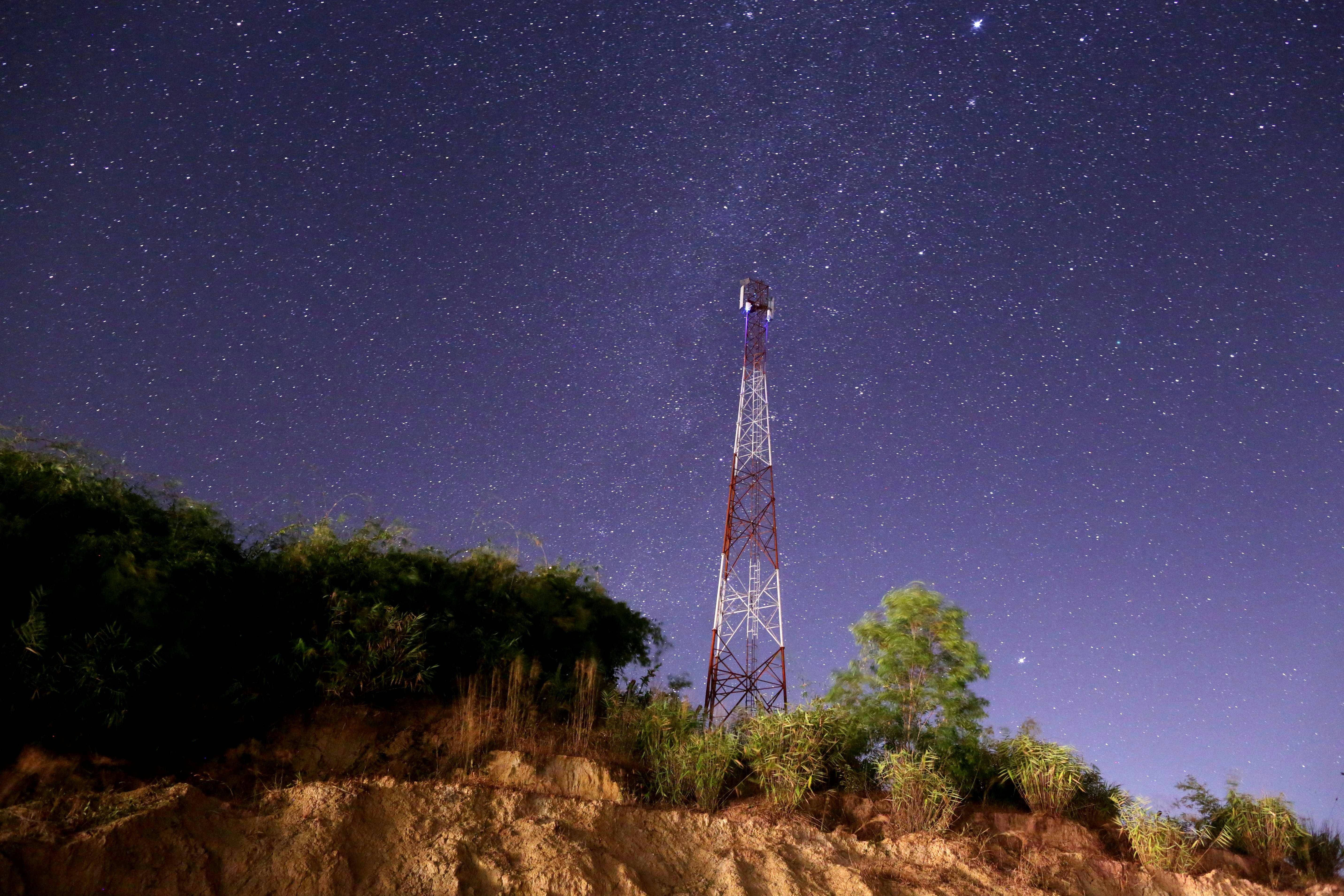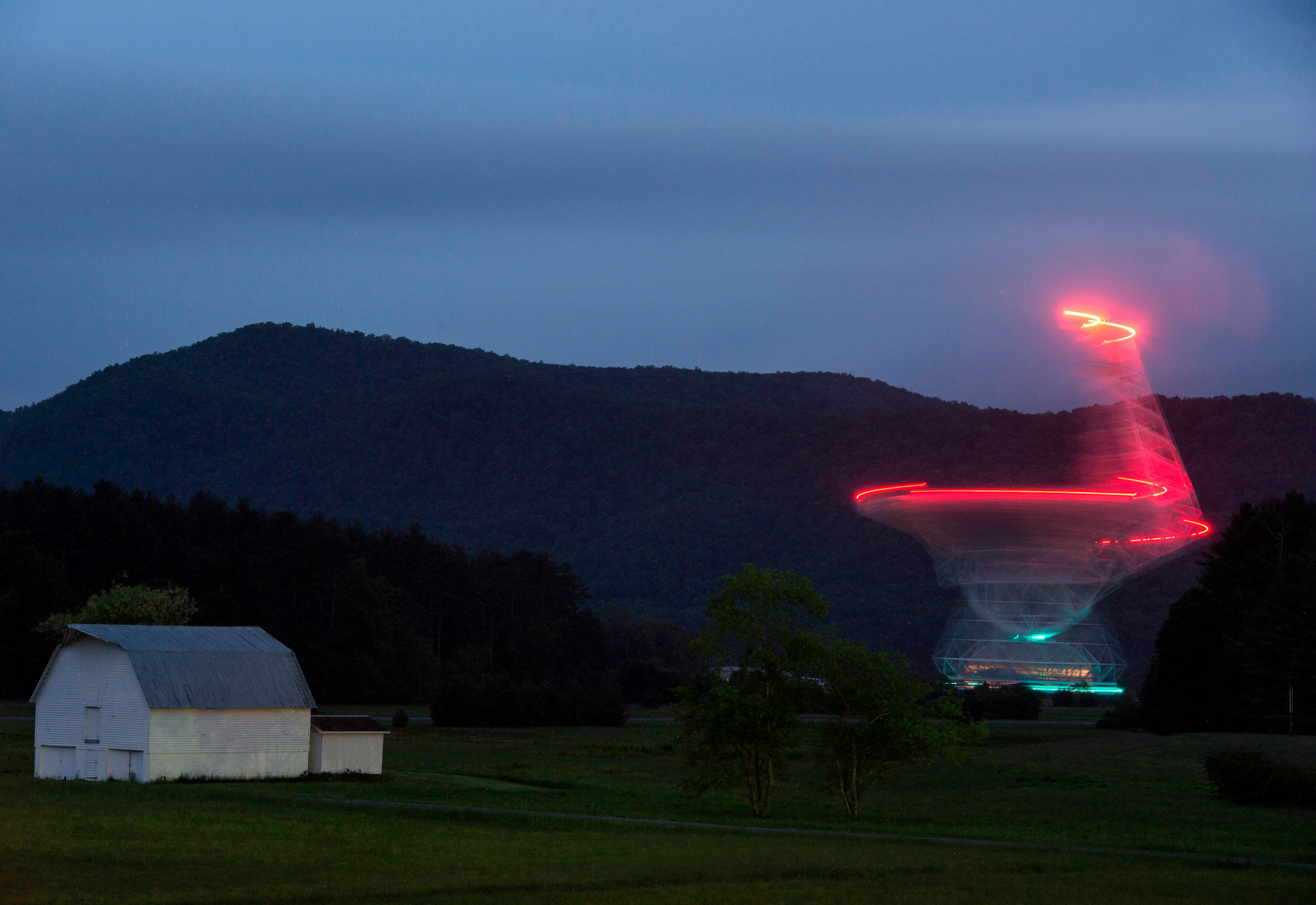
If you’re an alien listening to Earth’s radio signals, you may have noticed some changes.
Most of the radio waves our tech-obsessed planet is beaming into space now come from the mobile towers that connect our cell phones. And according to a recent study, it may not be long before alien astronomers, if they’re out there, can pick up those signals from nearby planets.
A team of SETI (Search for Extraterrestrial Intelligence) researchers, led by Ramiro Saide of the University of Mauritius, simulated how much radio energy Earth’s millions of mobile towers are leaking out into space, which they published in the Monthly Notices of the Royal Astronomical Society.
Cell Service on Other Planets?
For decades, we’ve known that aliens, if they’re out there and if they have radio telescopes, could eventually pick up television or radio broadcasts from Earth. But like those mediums, the networks that keep our mobile phones and tablets connected depend on million of towers around the world, which broadcast and receive radio signals.
Most cell towers are pretty low-powered (rural ones pump out more wattage than urban ones because they have larger areas to cover) but their cumulative signal strength adds up to enough of a radio “glow” to be visible from a few light years away. (Assuming alien astronomers have telescopes a couple of generations more advanced than ours, at least.)
Saide and his colleagues used a publicly-available database, which lists the location and cellular technology used by nearly all of the world’s mobile network towers, to build a computer simulation of the radio waves Earth’s mobile towers might leak out into space, as well as how those leaked radio waves emanating from all over the world might look to observers in a few nearby star systems.

The View From Alpha Centauri A
Let’s say you’re an alien radio astronomer on a planet around Alpha Centauri A.
If you keep your telescope's antennas pointed at the nearby Solar System for several days, eventually you’ll notice that the broadband radio signal you’re studying gets stronger and weaker at regular intervals. That’s because mobile network towers direct most of their power out toward the horizon, so the strongest signals are pointed in the direction of whichever stars are rising or setting where the tower is. From an alien astronomer’s point of view, that looks like the mobile tower coming into, or moving out of, view as Earth rotates.
A radio telescope in the Alpha Centauri A system would receive the strongest radio signals when western Asia and central Europe are just at the edge of the visible part of Earth. One orbiting Barnard’s Star would see two clear spikes in the data, one from Western Europe and one from Eastern Asia.
According to study co-author Michael Garrett, director of the Jodrell Bank Center for Astrophysics, these hypothetical aliens might even recognize what they’re seeing in the radio data. “If technological civilizations evolve in similar ways (and scientifically, that seems likely, I think) they could probably make a comparison of what they measure from the Earth with their own past developments,” Garrett tells Inverse, “so I think they would be able to pinpoint our stage of development to the rise of personal mobile communication devices.”
It’s even possible that, based on the patterns, ambitious alien astronomers could draw some conclusions about which parts of Earth’s surface were most heavily populated. They might also be able to decode enough of the data to replace their classic sitcoms with modern TikTok videos.
“If they are way ahead of us and have enough sensitivity, they could decode the data — why not? We can decode data sent from Voyager, now leaving the heliopause,” says Garrett. “I hope they like cats doing stupid weird stuff!”

Stronger Signals, Better Telescopes
SETI research isn’t just about listening for radio signals from distant civilizations; sometimes it’s also about figuring out how we might – accidentally or on purpose – signal our own presence in the cosmos. Simulations like Saide and his colleagues help astronomers think about who might be able to see us, as well as what kinds of evidence we might look for on other worlds: for example, patterns of radio signals that look like mobile networks.
Our current state-of-the-art radio telescopes, like the Green Bank Telescope, aren’t sensitive enough to detect the radio signatures Saide and his colleagues simulated, and even next-generation telescopes like the upcoming Square Kilometer Array “can do better but are still some way off detecting these low levels of leakage emission,” they write. But within a few decades, however, our next next-generation of telescopes might be up to the task.
And meanwhile, the strength of the radio signals we’re pouring out into space increases with every generation of cellular network technology, which means our collective mobile usage will be detectable by less sensitive telescopes. If the extraterrestrial smartphone users we’re looking for are on something like the Barnard’s Star version of 7G or 8G mobile networks, we might already be able to catch at least a trace of their towers’ signals.
“Our technology will keep going. When it’s good enough to detect alien radio signals is difficult to estimate; it could be tomorrow, could be next year, could be the next century,” says Garrett. “What is clear is that our own technology is advancing so quickly that we are moving towards that moment of detection exponentially quickly. That’s very exciting.”
In the meantime, Saide and his colleagues hope to simulate the rest of the radio waves we’re accidentally leaking out into space, from wi-fi networks and digital broadcast systems to uplinks with satellite constellations like StarLink and OneWeb. And eventually, the radio footprint visible to nearby aliens may even spread to other worlds in our Solar System.
“You can be sure the Moon is also going to become radio bright as bases are set up there and a phase of some kind of exploration begins,” says Garrett. “In general, it’s likely that radio will follow humans and their technology wherever they go.”







